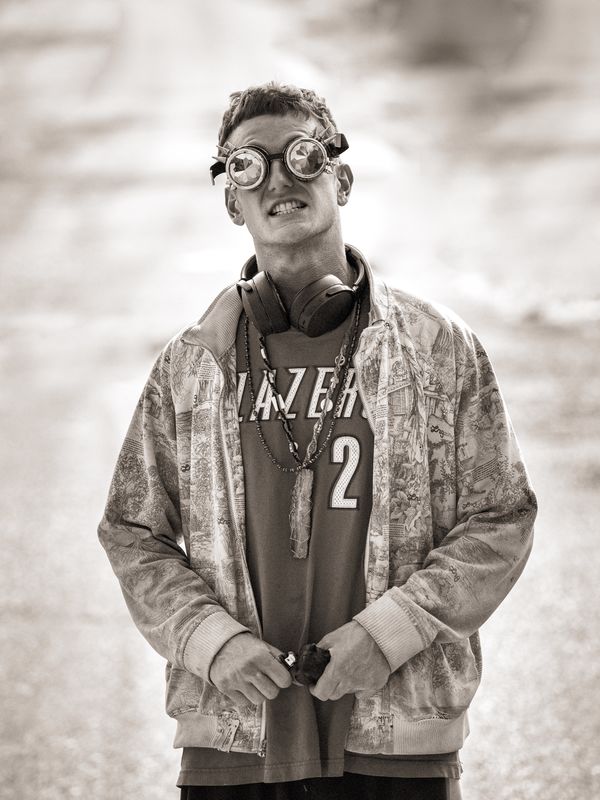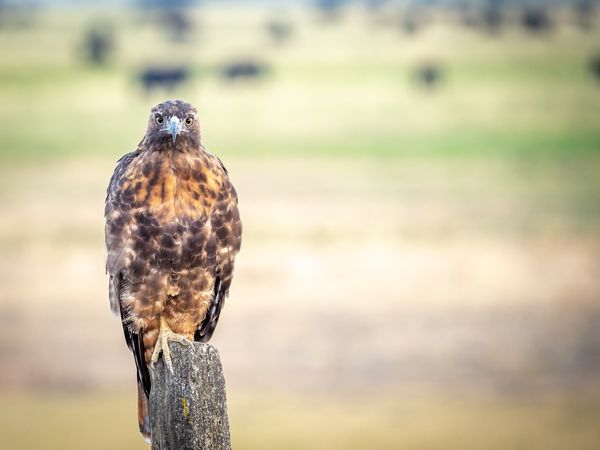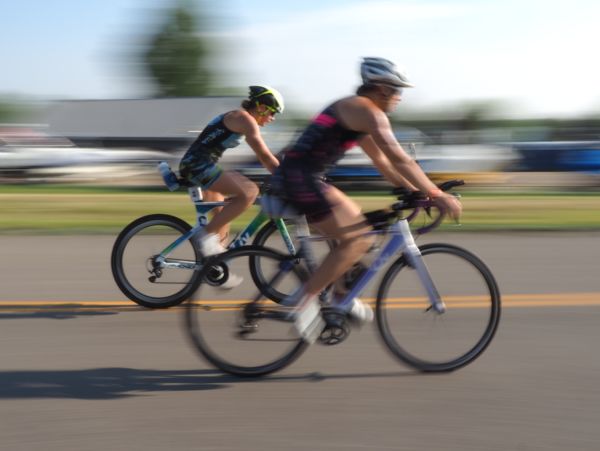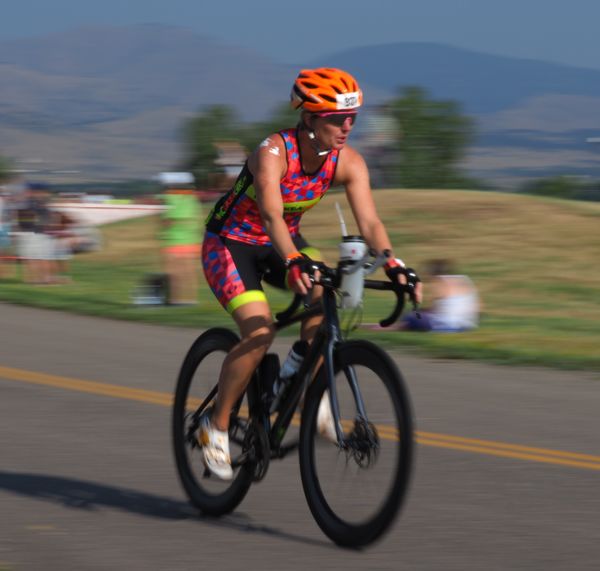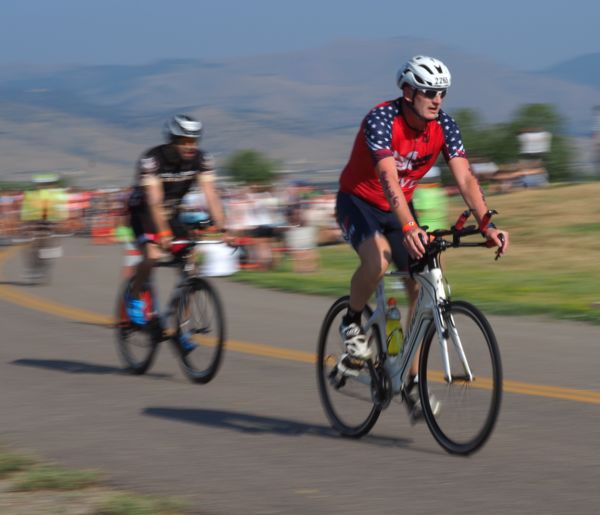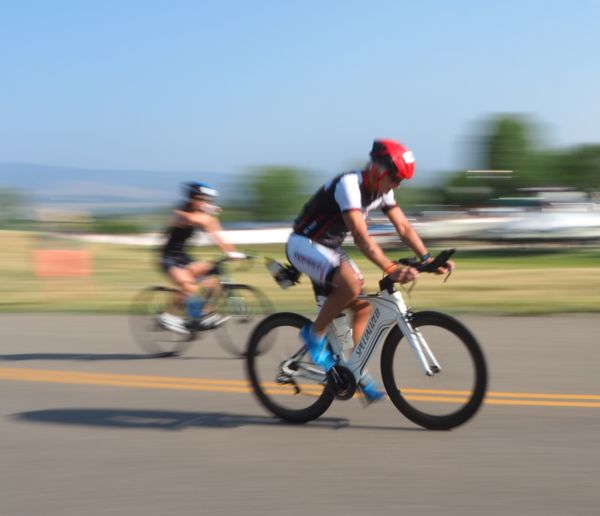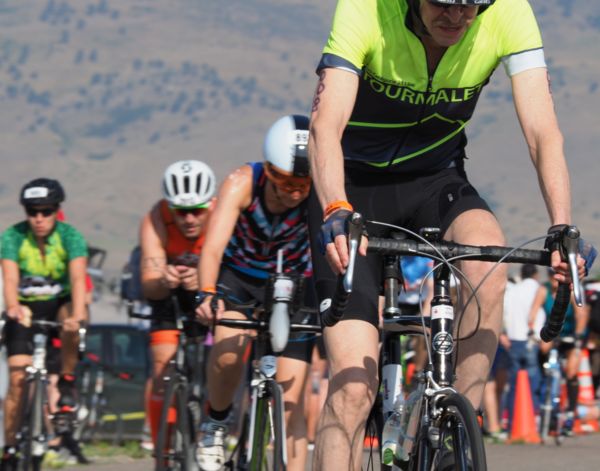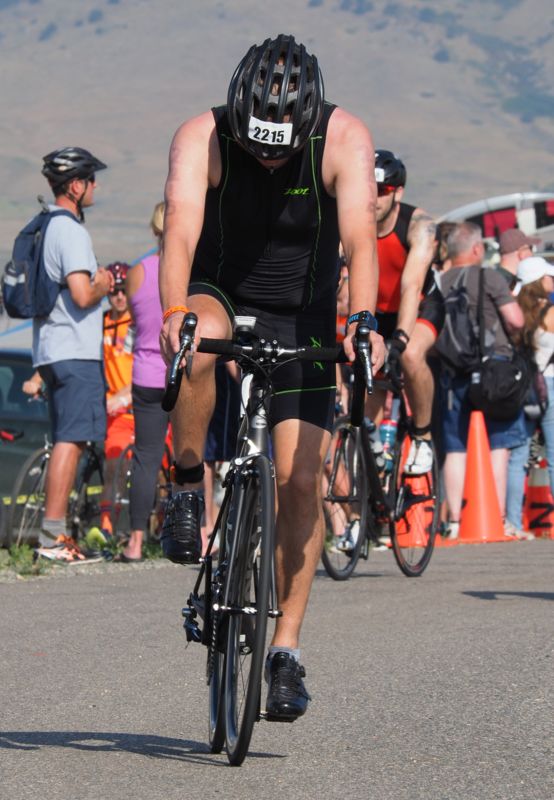Is this impossible?
Sep 26, 2018 13:21:23 #
TRAVLR38
Loc: CENTRAL PA
Hi, All,
I have a question that I hope I don't already know the answer to.
The problem is isolating the foreground and creating a blurred background for sports (soccer, volleyball, football, etc.) with a MFT camera, Olympus OM D M10ii, to be precise. I have ordered a Zuiko Pro f/2.8 40-150 lens, but am not able to get the separation I want. This lens has marvelous IQ, but is ungainly for a walk around lens. It is well within the time period in which I can send it back. I can and am considering the Zuiko Pro f/4 12-100 lens, which also has great IQ, according to the tests done by Imaging-Resource.
I can always use Photoshop to blur the background, but it takes about 15-20 minutes per image to make it look good. This requires carefully selecting the subject, inverting and blurring the background. It works, but takes more time than I care to spend, except for an exceptional catch.
So...Finally to the question. Can the MFT sensor isolate the subject in some way that I do not yet know? Or do the physics involved make this possible only for a full frame sensor and an f/2.8 lens? Am I seeking the impossible?
Because I take lots of types of pictures and because I am pretty heavily invested in MFT, I don't want to spring for a full frame and a mammoth lens which I would only use for sport.
I would appreciate any advice.
Thanks
I have a question that I hope I don't already know the answer to.
The problem is isolating the foreground and creating a blurred background for sports (soccer, volleyball, football, etc.) with a MFT camera, Olympus OM D M10ii, to be precise. I have ordered a Zuiko Pro f/2.8 40-150 lens, but am not able to get the separation I want. This lens has marvelous IQ, but is ungainly for a walk around lens. It is well within the time period in which I can send it back. I can and am considering the Zuiko Pro f/4 12-100 lens, which also has great IQ, according to the tests done by Imaging-Resource.
I can always use Photoshop to blur the background, but it takes about 15-20 minutes per image to make it look good. This requires carefully selecting the subject, inverting and blurring the background. It works, but takes more time than I care to spend, except for an exceptional catch.
So...Finally to the question. Can the MFT sensor isolate the subject in some way that I do not yet know? Or do the physics involved make this possible only for a full frame sensor and an f/2.8 lens? Am I seeking the impossible?
Because I take lots of types of pictures and because I am pretty heavily invested in MFT, I don't want to spring for a full frame and a mammoth lens which I would only use for sport.
I would appreciate any advice.
Thanks
Sep 26, 2018 13:32:18 #
Can you post one or a few example images and be sure to store the original? The background blur is not just a function of the aperture, but also your distance to the subject, the focal length of the lens, and the distance between the subject and the background. Your examples, from the camera and not processed in PS, will help confirm your expectations are realistic for the shooting situations you're currently encountering.
Sep 26, 2018 13:41:15 #
TRAVLR38 wrote:
Hi, All, br I have a question that I hope I don't... (show quote)
Unfortunately, that is a common issue with a camera with a smaller than full frame sensor. Crop sensor cameras will always give you a greater depth of field than a full frame.
Sep 26, 2018 13:45:50 #
TRAVLR38 wrote:
Hi, All, br I have a question that I hope I don't... (show quote)
Not impossible but difficult. MFT crop factor is the problem. A Leica 42.5 mm F1.2 Nocticron will give you a depth of field and angle of view somewhere similar to an 85mm F2.8 on a full frame camera. Going to a slower lens when wide open is not going to get you what you want.
Olympus has a 75mm F1.8, a 45mm F1.8, Voigtlander offers a Nokton 42.5mm f/0.95 - these are more likely to give you more separation than what you are using now, as long as you use them wide open.
Sep 26, 2018 13:54:57 #
This is with the 75-300 mm lens at 300 mm, if that focal range might be of interest to you. With your sports venues, the relatively short distance from subject to background could definitely be an issue - assuming you're on the sidelines and not shooting from the goal ends 
M.ZUIKO DIGITAL ED 75-300mm f/4.8-6.7 II Lens at f/8

M.ZUIKO DIGITAL ED 75-300mm f/4.8-6.7 II Lens at f/8
Sep 26, 2018 14:08:51 #
TRAVLR38 wrote:
Hi, All, br I have a question that I hope I don't... (show quote)
Your lens will work better if you use a three stop (ND8) or six stop (ND64) neutral density filter, low ISO, and f/2.8 in Manual or aperture priority mode. Use it mostly at the long end of its range.
DO NOT waste time with f/4 or smaller maximum aperture lenses. That’s going the exact opposite direction from where you want to be.
Remember, f/2.8 at 150mm on Micro 4/3 has the full frame look of f/5.6 at 300mm, from the same distance. So you should work with the lens wide open to maximize depth of field.
Sep 26, 2018 15:53:37 #
burkphoto wrote:
Your lens will work better if you use a three stop... (show quote)
Minimize, not maximize the DoF.
Sep 26, 2018 16:03:28 #
TRAVLR38 wrote:
Hi, All, br I have a question that I hope I don't... (show quote)
These were taken with the lens you are having issues with. 40-150 2.8
Sep 26, 2018 19:59:20 #
burkphoto wrote:
Your lens will work better if you use a three stop (ND8) or six stop (ND64) neutral density filter, low ISO...
For sports?
Sep 26, 2018 20:17:44 #
Gene51 wrote:
Minimize, not maximize the DoF.
Yeah! Senior moment there. [forehead slap]
Sep 26, 2018 20:39:27 #
TriX wrote:
For sports?
If you want shallow DOF for subject isolation and nice bokeh, or if you just want the best lens performance, you want to work wide open to about two stops down on Micro 4/3 cameras.
Lenses are HALF the focal length of their full frame coverage equivalents. The effect of that is the same DOF at f/2.8 on m43 as full frame would give you at f/5.6 and double the focal length. So at f/8 on m43, you have the FF DOF equivalent of f/16...
I try to work at apertures wider than f5.6 on Micro 4/3. All my f/2.8 lenses are sharpest and most well-corrected at f/4, anyway.
I had to get ND filters for cinematic video work. In full sun, ISO 200 (as low as it gets) a normal exposure for 24fps video would be 1/50 second at f/32! My lenses don’t go to f32, and I’d never use f/32, even if they did. I would hate the diffraction and extreme DOF.
My ND 64 (6-stop reduction) makes that daylight exposure a respectable ISO 200 @ 1/50 @ f/4. I get nice background blur in a 100mm closeup on a character’s face.
The EVF makes it all possible — you couldn’t see to focus through a dSLR finder with an ND64 in place. Remember, cinematic work is manual exposure, manual focus, most of the time.
Sep 26, 2018 21:02:41 #
burkphoto wrote:
If you want shallow DOF for subject isolation and ... (show quote)
I believe we’re discussing different things (stills vs video). I completely agree that you want to shoot wide open to a stop or two down if minimizing DOF is the object. You’re referring to shooting video at 1/50 whereas I’m referring to shooting stills, and I simply turn up the shutter speed (to 1/8000 if needed). I’ve never yet found a situation in shooting stills in sports, day or night, which required an ND, even at lower ISOs. I’m usually concerned with not enough light, rather than too much

In regards to the OP’s issue, (unless he wants to move to FF), the best answer may be to choose a fast prime (wide open or nearly so) such as a Rokinon 85mm f1.4 or Zuiko 75mm f1.8. I’m sure some of the M43 advocates may have other suggestions...
Sep 26, 2018 22:46:42 #
burkphoto wrote:
Your lens will work better if you use a three stop (ND8)
or six stop (ND64) neutral density filter, low ISO, and
f/2.8 in Manual or aperture priority mode. Use it mostly
at the long end of its range. ..........
........... So you should work with the lens wide open to
maximize depth of field.
Your lens will work better if you use a three stop (ND8)
or six stop (ND64) neutral density filter, low ISO, and
f/2.8 in Manual or aperture priority mode. Use it mostly
at the long end of its range. ..........
........... So you should work with the lens wide open to
maximize depth of field.
1. ND filter for sports and tele lenses ? Why throw away
all that shutter speed ? Makes no sense.
2. Wide open aperture to MAXIMIZE the DoF ? Thaz just
plain backwards. It will MINIMIZE the DoF.
Another way to reduce background detail is panning. At
high shutter speeds you won't get long streaky panning
effects, but it will reduce detail and add life to your pix.
`
Sep 26, 2018 23:22:17 #
User ID wrote:
1. ND filter for sports and tele lenses ? Why throw away
all that shutter speed ? Makes no sense.
2. Wide open aperture to MAXIMIZE the DoF ? Thaz just
plain backwards. It will MINIMIZE the DoF.
Another way to reduce background detail is panning. At
high shutter speeds you won't get long streaky panning
effects, but it will reduce detail and add life to your pix.
`
all that shutter speed ? Makes no sense.
2. Wide open aperture to MAXIMIZE the DoF ? Thaz just
plain backwards. It will MINIMIZE the DoF.
Another way to reduce background detail is panning. At
high shutter speeds you won't get long streaky panning
effects, but it will reduce detail and add life to your pix.
`
Good catch! I had some “Senior Moments” today. Yes, wider aperture reduces DOF. And I completely missed the word, ‘sports’ in the OP’s post.
True, for stills of sports action, an ND would not make sense. For cinematic video, though, it would be necessary, unless recording with a high shutter speed for motion analysis (which makes the video really jerky if played in real time).
I like Tri-X’ suggestion of using a fast prime like the Olympus 75mm f/1.8. The Panasonic Leica 200mm f/2.0 would be great, but it’s pricey! Same goes for the Olympus 300mm f/4.0.
Sep 27, 2018 02:21:17 #
wdross
Loc: Castle Rock, Colorado
TRAVLR38 wrote:
Hi, All, br I have a question that I hope I don't... (show quote)
Is this what you are trying to do?
If you want to reply, then register here. Registration is free and your account is created instantly, so you can post right away.







